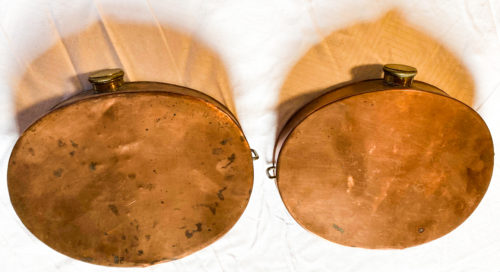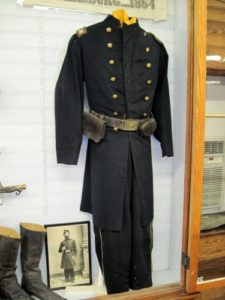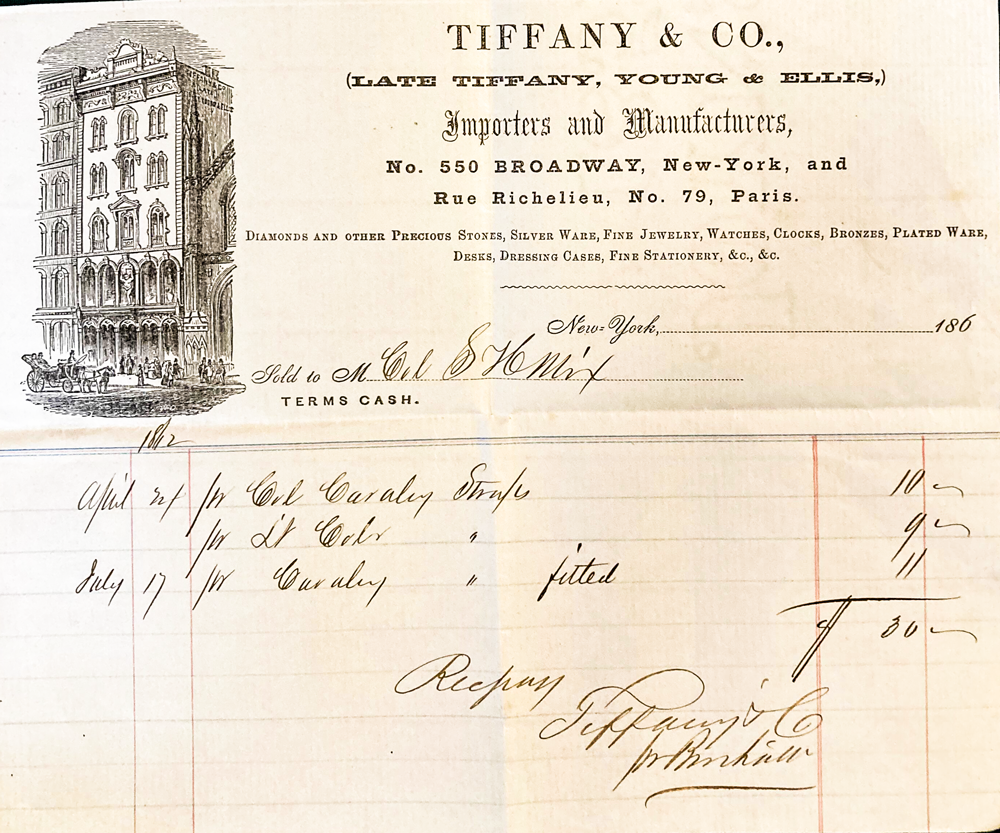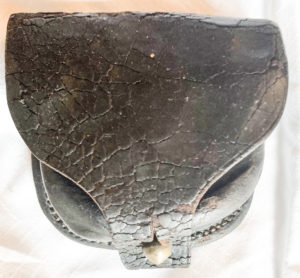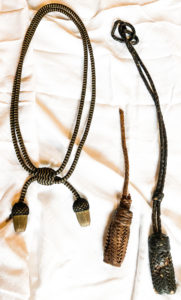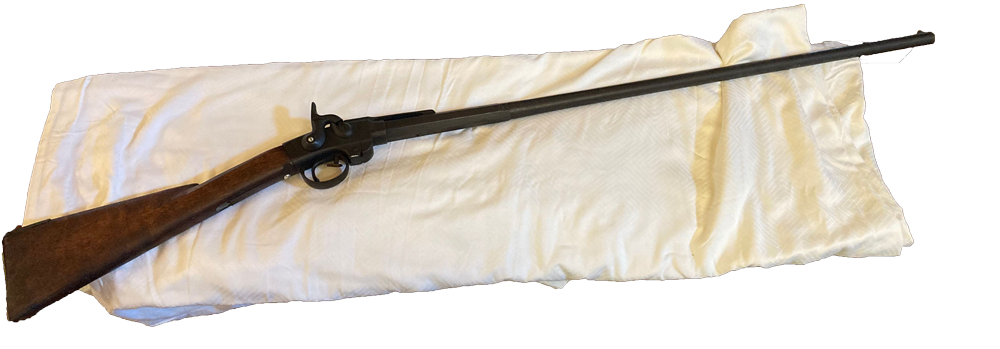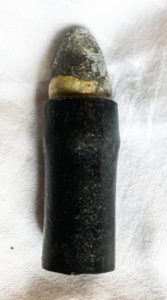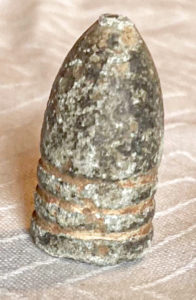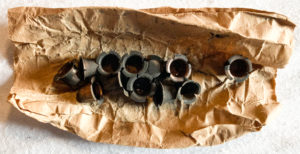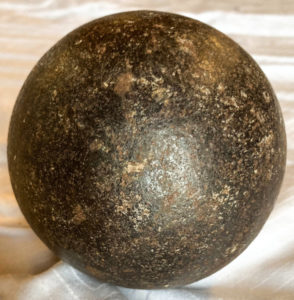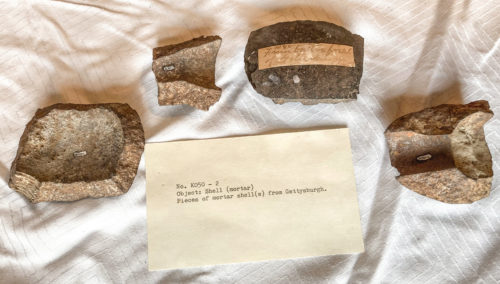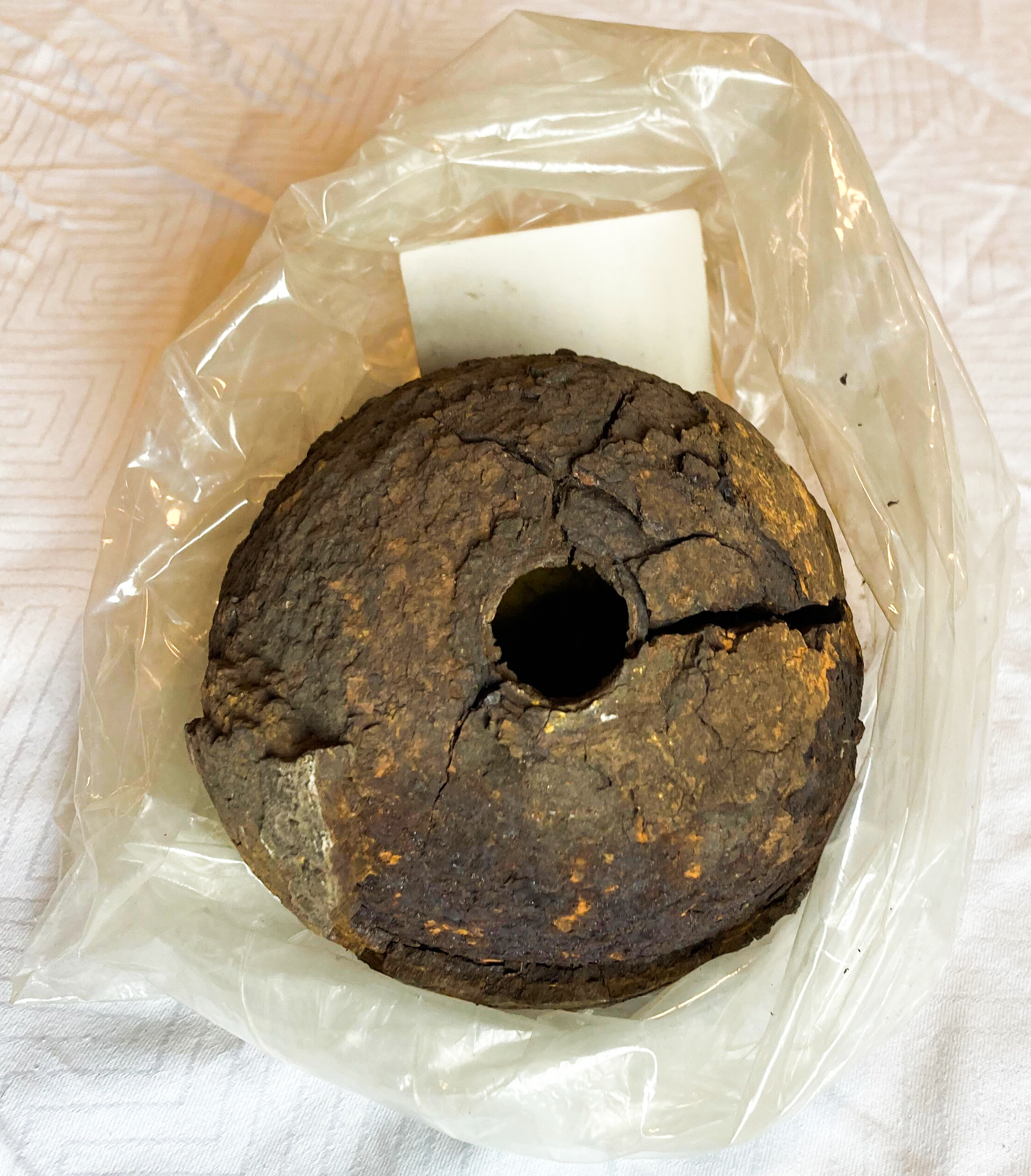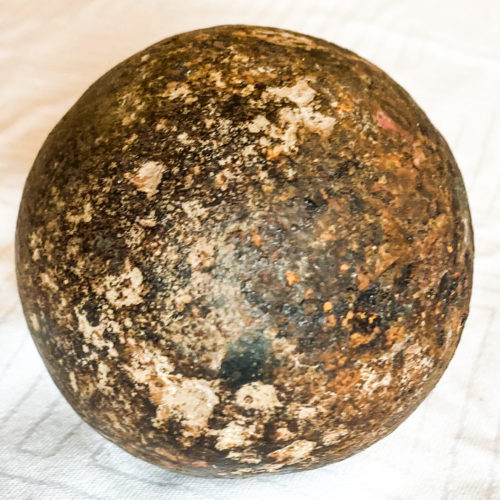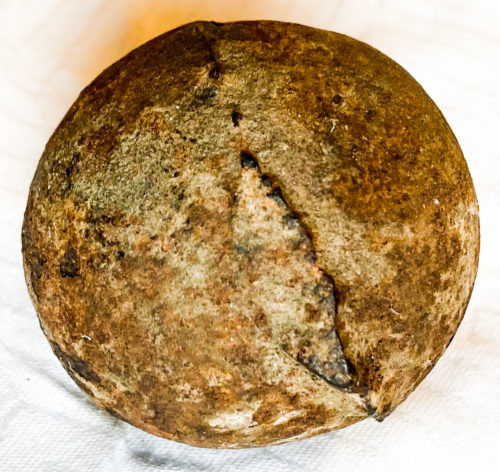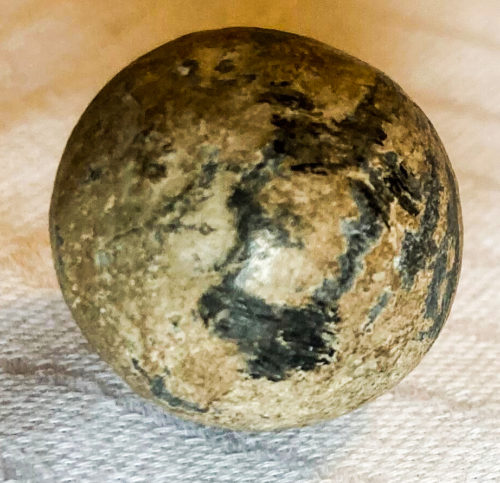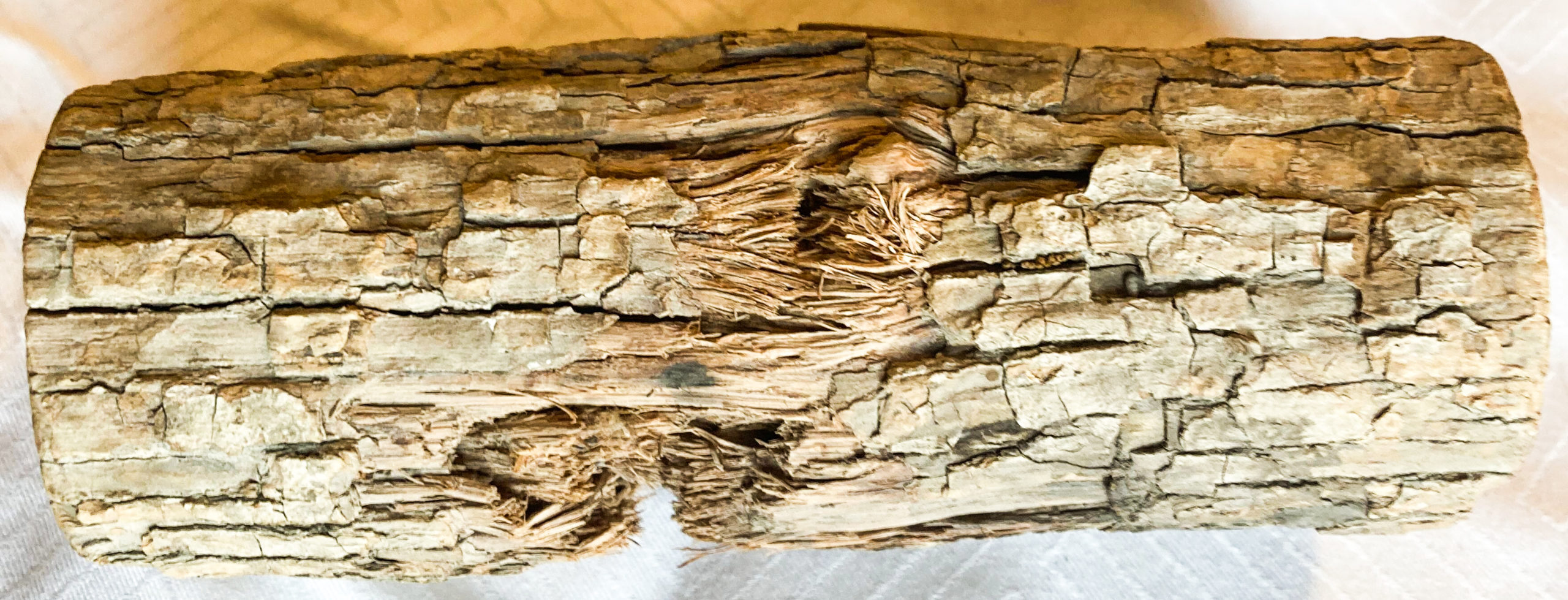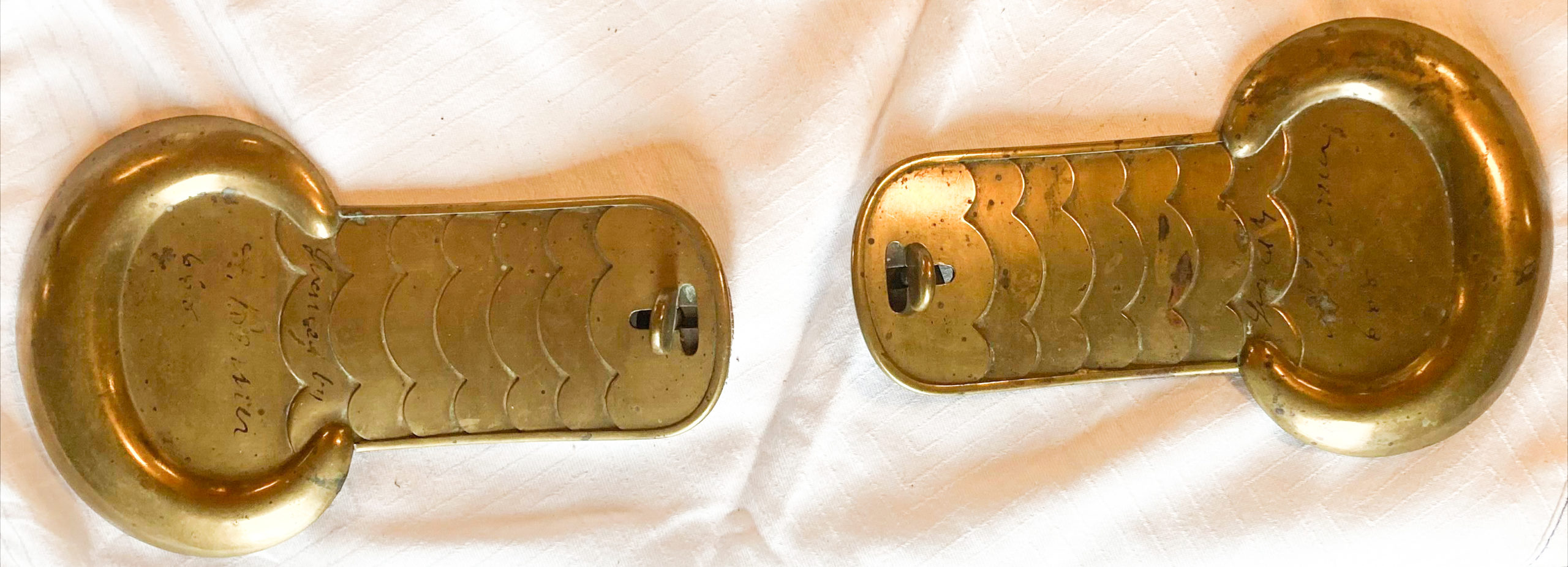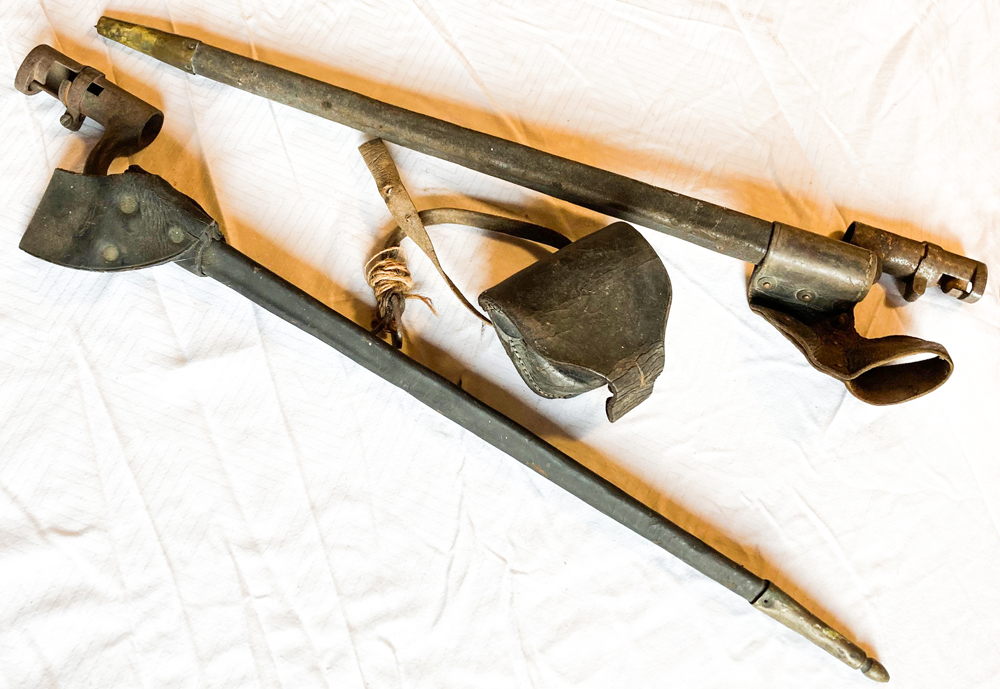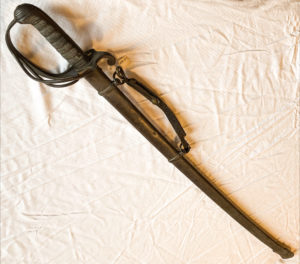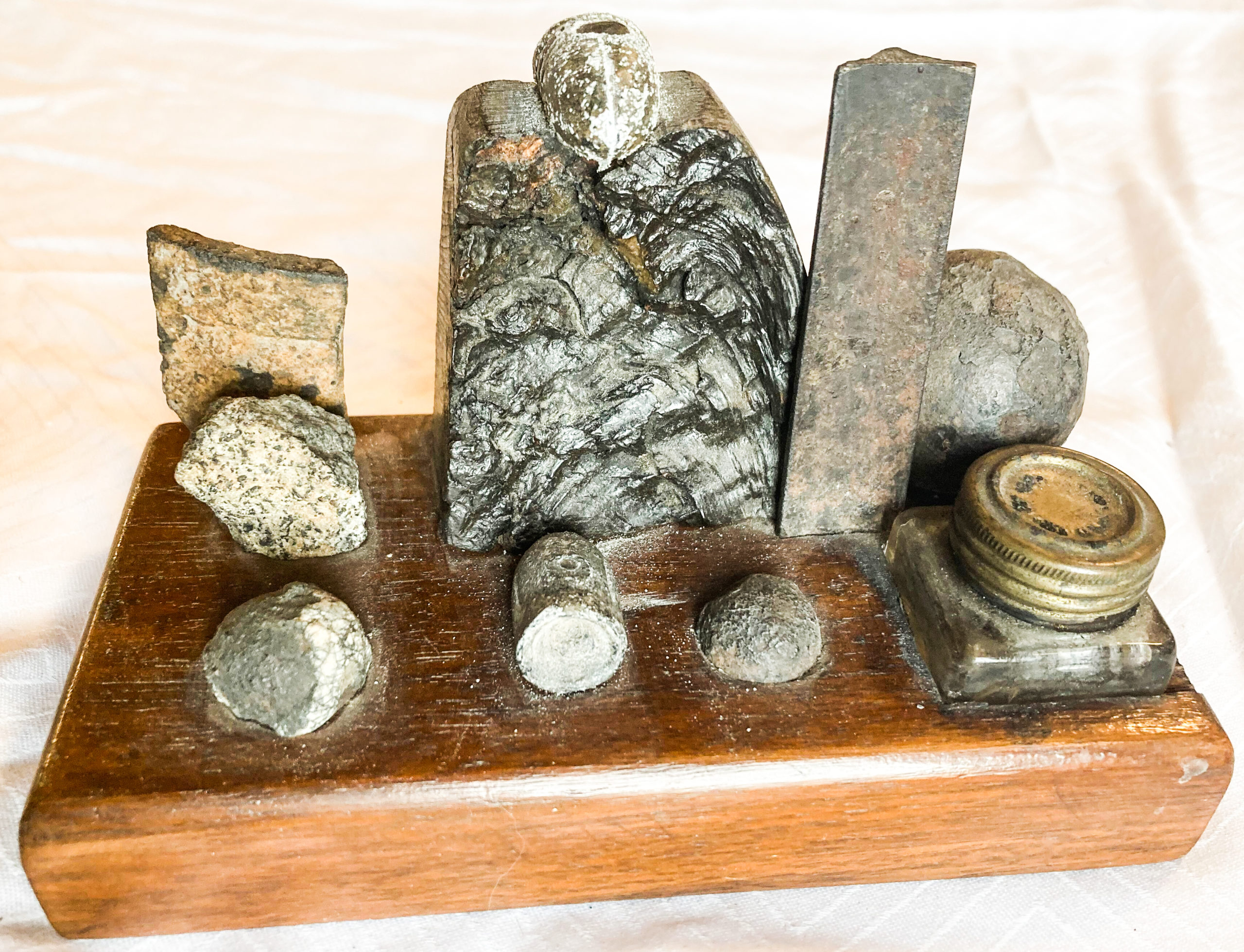
These objects all came from the American Civil War. Some of them were created during this time period (1861-1865) by soldiers while other objects in this collection were created before or after. This exhibit features objects which belonged to various people including Colonel Simon Mix of the 3rd NY Cavalry and Captain Peter Clark of the 76th NY Infantry Company I.
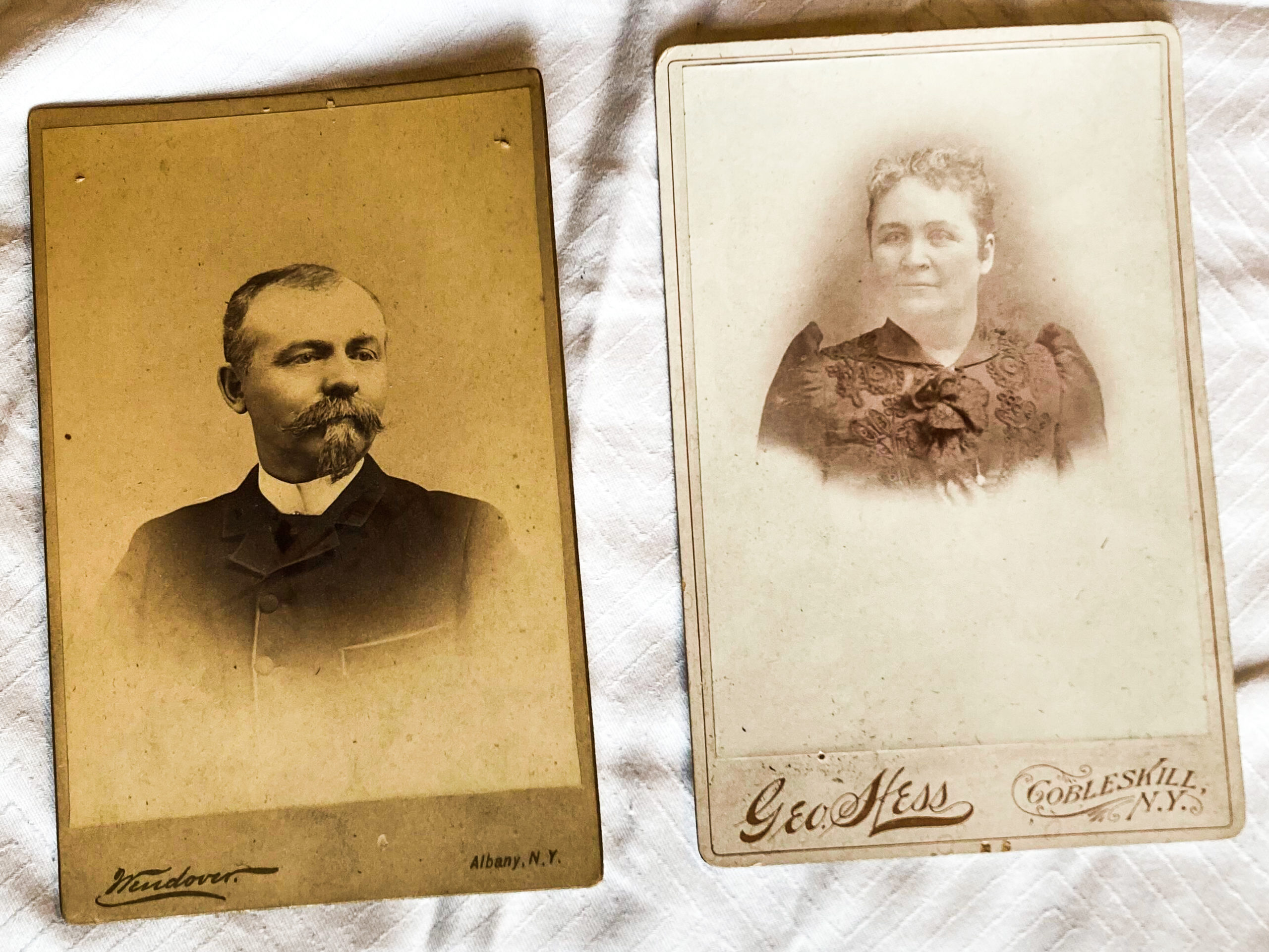
To the left is a picture of Captain Peter S. Clark. To the right is a picture of his wife, Annie M. Clark. The pictures below depict Captain Clark’s Identity Disc. Next to the photographs of his identity disk is a picture that was obtained from the Old Stone Fort Museum website which depict other items which belonged. All these items were donated by Captain Clark.
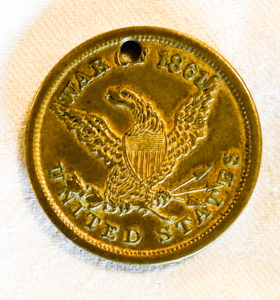

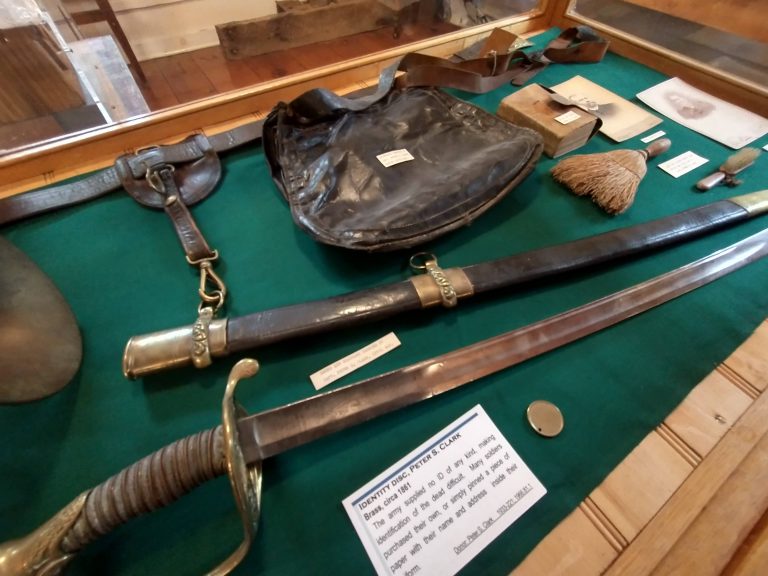
For more information on the identity disc and Captain Clark himself, see Civil War Identity Disc of Captain Peter S. Clark.
The following items below were owned by Captain Clark. His sword, scabbard and belt are pictured below. The scabbard and belt were made from leather. The belt contains an engraving of an eagle in its center.
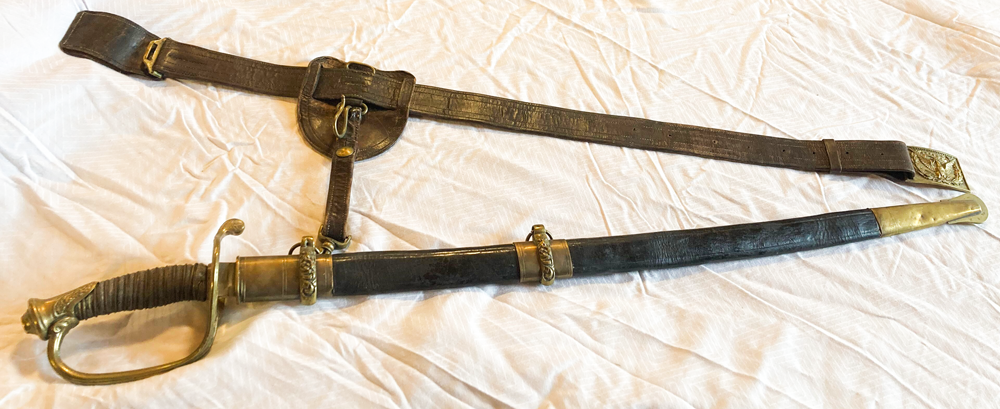
These are pictures of Captain Clark’s haversack, bible, and pair of brushes. It is likely that the bible and brushes were carried in the haversack along with food such as hardtack.
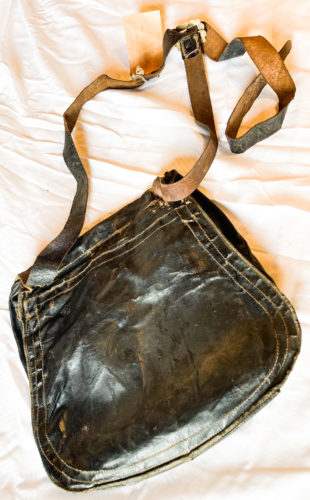


Canteens such as these, along with haversacks, were carried by soldiers over their shoulder. The haversack was carried over one shoulder while the canteen was carried over the other. These canteens could carry up to 42oz of water. The two below were regulation canteens that were issued to the soldiers by the US Army. The canteen at the top left was owned by Charles C. Campbell who enlisted in the 76th NY Infantry on November 1, 1861 and subsequently transferred to the 3rd Heavy Artillery in Albany until June 26, 1865. This canteen was donated by Campbell’s daughter, Mrs. Edward Hample.

The blue and brown canteens were of the 1858 model and were also regulation issued. These canteens were made from tin and covered in wool. Getting the fabric cover wet would keep the water within them cold. The two other canteens were non regulation. These canteens were purchased from third party vendors and were often of a higher quality than their regulation counterparts. It was common for a soldier to purchase, be given, or find a non regulation canteen on the battlefield.
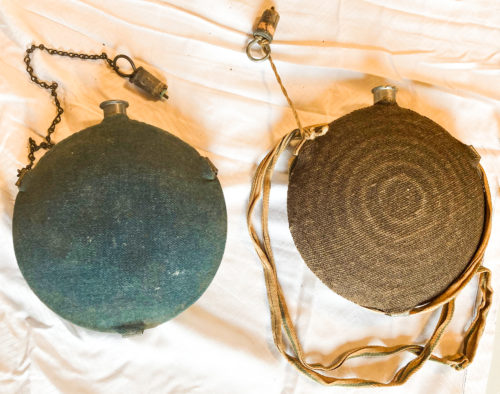
The first picture below is of Colonel Simon H. Mix. The next picture is a campaign advertisement for the Republican Party ticket in 1860, when Mix ran for Congress. The picture after that is of his uniform. The picture of Colonel Mix and the picture of his uniform were obtained from the Old Stone Fort website. The last picture is of Colonel Mix’s shoulder strap (the eagle represents the rank of Colonel) which he purchased from Tiffany & Co. Officers had to outfit themselves with everything including accoutrements like shoulder straps. The picture below is the receipt which Mix received for his strap from Tiffany & Co. For more information on Colonel Mix, see Colonel Simon Hosack Mix’s Uniform.
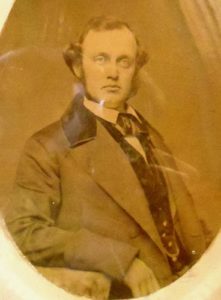
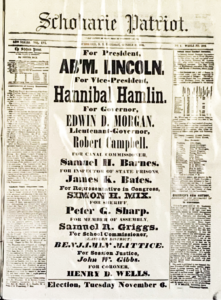
This pistol holster, pair of slippers, belt, cap box, hat chord with acorn, sword knots, bible and sword belt also belonged to Colonel Mix. The hat chord and sword knots were purely decorative.
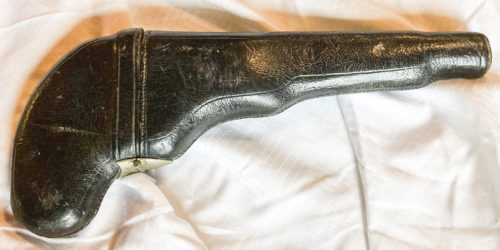
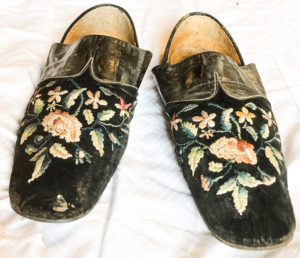
The picture below is of a “Consolidated Morning Report” from July 31, 1863 for the 18th Army Corps, which the 3rd NY (Mix’s regiment) was under. Lieutenant Colonel George W. Lewis (who became Colonel 11 months later after Mix was killed) was listed as the Commander of the 3rd NY Cavalry in New Bern, North Carolina. Other regiments and Commanders stationed in New Bern as shown from this document were Lieutenant Colonel Philip G. Vought of the 12th NY Cavalry and Captain Emory Cummings. Captain Cummings was a First Lieutenant in Company A of the 3rd NY Cavalry. He then transferred to Company A of the 23rd NY Cavalry where he became a Captain. (Unit Roster pg. 726, 23rd Cavalry Regiment: New York State Military Museum and Veterans Research Center website). The 23rd regiment was not completed and only contained two companies (named A and B). This regiment was known as the Mix Cavalry after its Colonel and founder, J.H. Mix. The two companies from this regiment mainly stayed with the 12th NY Cavalry. (23rd Cavalry Regiment, New York State Military Museum and Veterans Research Center website, https://museum.dmna.ny.gov/unit-history/cavalry/23rd-cavalry-regiment).
For more information on the 3rd NY Cavalry Regiment, see 3rd NY Cavalry Company G Civil War Document Exhibit.
This is a Smith Carbine with the 1856-57 patent. Carbines are short rifles and are breech loaded as opposed to Muskets which are muzzle loaded. During the Civil War, Carbines were commonly used by Cavalry as they were light and easy to maneuver as they often came with slings. Smith Carbines had an effective range of 300 yards. These guns are single shot and use percussion caps. Although this particular gun was used by Cavalry, there is a version of the Smith Carbine which was used by Artillery. For more information on Carbines and other weapons from the Civil War, see https://www.nps.gov/articles/000/civil-war-weapons-in-the-shenandoah-valley.htm#onthisPage-1. Information on the Smith Carbine obtained from “Civil War Weapons in the Shenandoah Valley,” Cedar Creek & Belle Grove National Historical Park. National Park Service. https://www.nps.gov/articles/000/civil-war-weapons-in-the-shenandoah-valley.htm1.
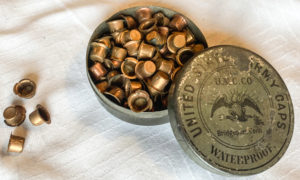
The picture to the left is a .50 caliber bullet for the carbine above and it is cased in rubber for the purpose of increasing firing velocity as the casing contained all necessary components required for firing. Breech loading guns such as Carbines combined elements from previous technologies and were often easier to load and fire than flint lock or percussion guns. Rubber casings were common among Smith Carbines. However, the Army soon turned to wrapping bullets in brass as rubber caused the guns to overheat after being fired. The picture in the center is a .58 caliber lead rifled minié ball donated by John Bates. Minié balls were named after their creator, a Frenchman named Claude E’tienne-Minié. These were used with rifled muskets. These soft hollow lead bullets contained ridges which would spin while being shot through the rifled musket which allowed for greater accuracy. These were perfected by Minié in 1849 and adopted in the United States in 1855 along with the rifled musket by then Secretary of War Jefferson Davis.
Information on the Minié Ball’s origin was obtained from.
-
- Howey, Allan W. “The Rifle-Musket and the Minié Ball.” HistoryNet. World History Group. Oct. 1999.
- Shoop, Isaac.“Small but Deadly: The Minié Ball.” The Gettysburg Compiler: On the Front Lines of History. Civil War Institute. April 30, 2019.
The pictures to the right (above photos) are of metallic percussion caps. Percussion caps were placed on top of the nipple (which is screwed into the touch hole). The hammer would hit the top of the cap once the trigger was pulled, causing the gun to fire. The metallic caps shown in the furthest right picture were made from copper.

The picture to the left is a 6lb cannon ball (solid shot) with a circumference of 28.4cm. The picture in the center consists of four pieces of grape shot found on the Gettysburg battlefield lined in order of size. The picture to the right contains four mortar shell fragments which were found on the Gettysburg battlefield. The difference between solid shot and mortar shells is that mortar shells explode over the target.
The above image shows two mortar shells, four cannon balls, and two grape shot balls lined up in order of largest to smallest. The next several images will feature close shots of these artillery pieces individually.
This mortar shell was found in Savannah Georgia. It weighs 6lbs and has a circumference of 42cm. The shells were hollow and filled with gunpowder through the hole. A fuse was screwed into the hole that would be lit, causing the powder inside to ignite and explode. When the shell exploded, it burst into between 8 and 30 pieces. Even if the explosion and shrapnel did not make contact it was still an effective weapon against morale and often caused the opposing forces to retreat.
This is another 6lb mortar shell which is slightly smaller, having a circumference of 34cm. It is in a bag due to its fragile condition as it contains a large crack. It is quite possible that this shell was fired but hit the ground without exploding. Regardless, it is likely that this mortar shell was buried.


These cannon balls are arranged from largest to smallest. The one on the top left weighs 3lbs and has a circumference of 22.3cm. The one on the top right also weighs 3lbs but has a circumference of 22cm. The one on the bottom left weighs 14 1/2oz and has a circumference of 16cm. Finally, the one on the bottom right weighs 12 1/2oz and has a circumference of 14 1/2cm.

Finally, these last two pieces of artillery are grape shot. The one to the left weighs 6 1/2oz and has a circumference of 12cm. The one to the right weighs 2oz and has a circumference of 8.3cm. Multiple balls of grape shot were fired at a time, being placed in a bag and fired through a cannon, hitting multiple people. This form of artillery functioned as a giant shotgun, being particularly devastating at short range. Grape shot was originally used at sea but later proved to be more effective when used on land. It was eventually replaced with more effective long range artillery after the Civil War. (Julie Martineau, “Grape Shot.” Des Moines County Historical Society | The Hawk Eye, Ames Tribune. https://www.amestrib.com/story/lifestyle/columns/2019/09/29/grape-shot/2663017007/)
This is part of a tree limb which was damaged by a bullet during the Battle of Gettysburg. Trees which were alive and survived the Battle of Gettysburg were called “Witness Trees.” The fate of the tree from which this branch originated is unknown.
These are the front and back pictures of a piece of art created after the Battle of Gettysburg which consisted of an inkstand with relics from the battlefield. It consists of grape shot used from Pickett’s charge, a piece of granite from Devil’s Den, a minié ball from the Peach Orchard, and a piece of shrapnel. This was a gift from Lillian Collin in 1961. It is likely that this relic was created well after the Civil War.
This is a photograph of an unknown Cavalry First Sergeant. The photograph itself is a hand-tinted daguerreotype and it is an enlarged copy. His relaxed and confident demeanor implies that he was a Veteran. In contrast, new recruits would often brandish weapons provided by the photographer. This image is in reverse as with most daguerreotypes.
These brass shoulder scales were worn by John Bemer of Schoharie who enlisted in the Union Army at the age of 36 on August 30, 1864. He served in Company A of the 91st NY Infantry and was on detached guard duty at Forts McHenry and Marshall. These shoulder scales were donated by Abner Bemer in 1899 and were labeled as being used for dress. Yet scales such as these would also provide protection against sabres.
This is a Brass Infantry Bugle. Bugles such as these were used during the heat of battle to guide troops. Artillery and Cavalry also used bugles but would produce different signals to avoid confusion among orders. This Bugle was pitched in Bb (B flat) which was the standard tuning pattern spanning from the Civil War to the Spanish-American War.
This is a kerchief ring that was created during down time either at a camp, prison or battlefield. The ring was carved out of wood or ivory.
This picture displays a cap box between two bayonets. Bayonets were placed on the end of muskets and were used in close range combat. Both smoothbore and rifled muskets used these. One common strategy was to have soldiers fix bayonets (put them on the barrel of their muskets) and charge. A bayonet charge could also be ordered when soldiers run out of ammunition as in the July 2, 1863 Union soldier bayonet charge on Little Round Top during the Battle of Gettysburg. As the quality of firearms increased, the use of bayonets gradually decreased.
This sword and scabbard were found on the Gettysburg battlefield.
This is a non commissioned Officer’s Sword and scabbard. A non commissioned Officer is a Corporal or Sergeant. This particular set belonged to Sergeant Peter N. Somers of Seward. He enlisted as a Private with Company E of the 44th NY Infantry on September 24, 1862. When he mustered out on June 28, 1865, he was a First Sergeant of Company F of the 24th Veteran Reserve Corps. A sword such as this had been in use by Infantry Sergeants to mark one’s rank since the Mexican American War (1846-1848) until the Spanish American War (1898). This particular sword is of the 1840 model. The picture below is of this sword unsheathed. This sword was donated by Lillian A. Somers.
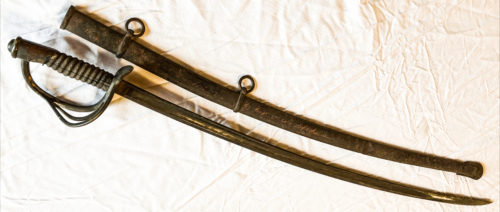
These swords were non regulation sabers and were imported from Germany, they were created around 1864 in Walscheid, Solingen, Germany. The sword to the left was carried by William Augustus Crapser. Crapser enlisted with the 11th Pennsylvania Cavalry as a Private in September 1861. After serving with that regiment for three years, he joined Company C of the 2nd NY Mounted Rifles as a 2nd Lieutenant. He was later promoted to 1st Lieutenant. It is believed that he purchased this saber when he first entered Company C as a 2nd Lieutenant. These sabers were donated in 1980 by Crapser’s great-grandson, William Oliver Crapser.
This final sword, which is in its scabbard, is a saber. It was used by Sergeant Rensselaer West Kinney who enlisted as a Private in Schoharie at 26 years of age on August 3, 1861 and served with Company D of the 3rd NY Cavalry. He fought at the Battle of Ball’s Bluff and crossed the Potomac at Edward’s Ferry. He also served with his Company during their expeditions to Kingston, Whitehall, Goldsboro, Warsaw, Little Washington and Plymouth. (List of Civil War Soldiers from fort ahic, Old Stone Fort Archives. pg. 14) Kinney reenlisted on December 16, 1863 and was subsequently promoted to Corporal. On March 1, 1865, he was promoted to Sergeant. He left the 3rd NY after it was disbanded on July 12, 1865. (Unit Roster pg. 870, 3rd Cavalry Regiment: New York State Military Museum and Veterans Research Center website). Sabres such as these were often used to cut through brush. As indicated by the 3rd NY Cavalry, they were also used in close combat.

